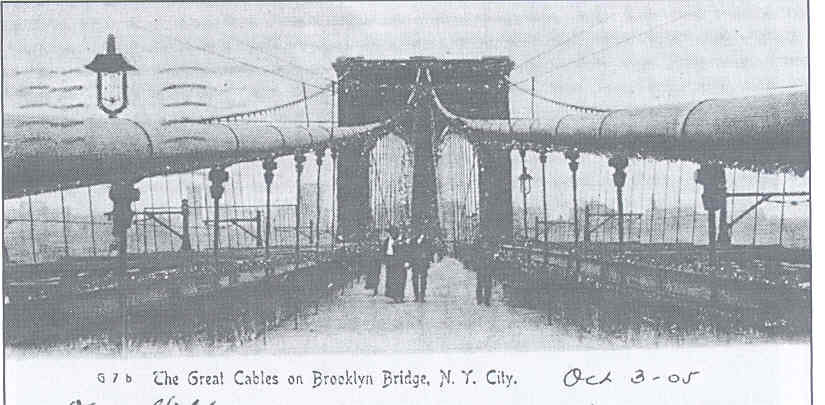Why the Brooklyn Bridge Still Stands—Part 2 The Engineering Fact

John Augustus Roebling called steel the “METAL OF THE FUTURE” and was the first to use galvanized steel in bridge construction a year after its commercial introduction in the United States. The Roeblings practiced what they preached. They BUILT STRONG BRIDGES, using generous amounts of the STRONGEST and BEST MATERIALS to ADD STRENGTH and STABILITY to their bridges.
John Augustus Roebling called the bridge “a great avenue” to carry an unprecedented LOAD of 37 million pounds, and the bridge measured more than a mile long. The bridge was built to be SIX TIMES STRONGER than the plans called for. The Roeblings had ANTICIPATED the age of the automobile. Today, the Brooklyn Bridge handles a quarter of a million automobiles per day going over it.
Each wire weighs 1,200 lbs; the 286 wires are bound together to form a strand; the 19 strands form one great bundle, all tightly wrapped in protective skin of soft iron wire originally now galvanized steel after the 1950’s rehabilitation to form a cable. Each of the four cables weighs almost seven million pounds. Each cable has a pull strength of almost 25 million pounds. Suspender ropes from the four cables connect to the roadbed or the floor beams. These directional stays add strength and beauty to the bridge. The roadbed is made stronger by the iron trusses underpinning the suspended floor. All these measures prevent the deck from swaying in high winds. Today, the Brooklyn Bridge, with three lanes of traffic in each direction, carries a quarter of a million automobiles per day.
The bridge does have its weak points: At mid-span, the roadway or superstructure is suspended by short rod suspenders, not wire ropes; and the main cables dip below the roadway and are too close to the main floor beams. No bridge today has that. The Brooklyn Bridge uses a simple lattice truss where today a “warren” type of truss is superior.
Ironically, John A. Roebling & Sons Company, the foremost cable manufacturer in America did not get the contract to cable the bridge because of the machinations of Abram Hewitt. The successful bidder, whom Washington Roebling had warned about, was caught substituting inferior, previously rejected cable wire for good cable wire. The bidder was made to use additional sound wire to reinforce the cable. John A. Roebling & Sons supplied the rest of the cable.
NYC Walks Blog 50 Why the Brooklyn Bridge Still Stands—Part 2 The Engineering Facts © 2018 by Dr. Philip Ernest Schoenberg
